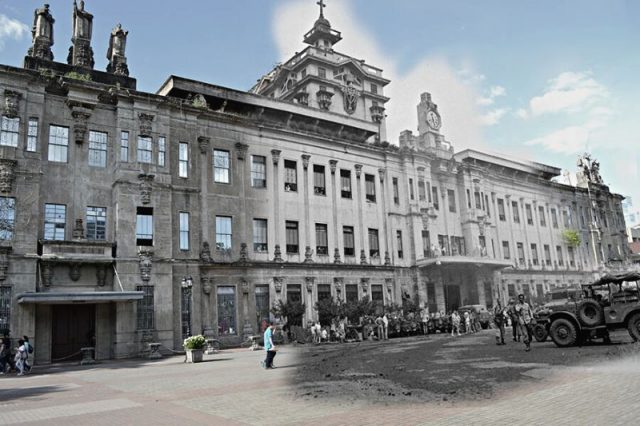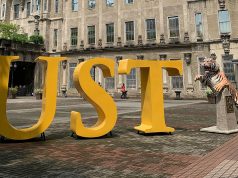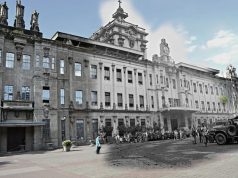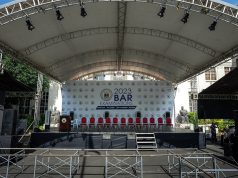
No matter where you studied around the Philippines, you have probably heard the urban legend that your school used to be a cemetery.
For the University of Santo Tomas, this narrative has a historical basis.
Photos from the National World War II Museum taken on Feb. 5, 1945 showed a backfilled soil and burial markers in front of the UST main building or what the students called lover’s lane.
“Three 1st cav soldiers killed in fight for Santo Tomas are buried on grounds,” the caption in the photo reads.
Three helmets can also be spotted on the ground.
The photo was taken two days after the US First Cavalry arrived in the Philippines to liberate Manila from the Japanese.
Based on the article by the U.S. Army, Gen. Douglas McArthur ordered the US First Cavalry to “Go to Manila! Go around the [Japanese], bounce off the [Japanese], save your men, but get to Manila! Free the internees at Santo Tomas [Internment Camp]! Take the Malacanan Palace and the legislative building!”
UST internment camp
From 1942 to 1945, the centuries-old UST served as the largest internment camp in the country for more than 3,000 people, mostly American civilians, based on a documentary by the US Embassy in the Philippines.
“It [UST] has the biggest building in the city and has a very wide open field. It’s also surrounded by a steel fence so it’s a nice place to confine people,” Augusto De Viana, a history professor, said in the documentary.
As the years passed, the living conditions inside the camp worsened.
Based on the historical account of Marie Adams, a Red Cross worker who was also held in the camp, hunger was one of the major challenges faced by internees.
“During the last few months, there was a tension among the internees that is almost indescribable. Irritability is one of the first symptoms of starvation, and certainly, that symptom was marked among us. We were all cross, irritable, and edgy; we argued about things that were utterly insignificant,” Adams said.
“We were ready to claw each other’s eyes out—over nothing at all. We were hungry; we were starved. When I went to bed at night, I felt just on the verge of screaming. I ached to the ends of my fingers and toes, with the most horrible ache that I have ever experienced,” she continued.
“We were so thoroughly depleted that frequently I would sit on my bed and stare at the sink in the corner of the room, wondering whether it was worthwhile to make the effort to get up and go over to it to wash my hands, or whether it wouldn’t be better to wait until lunch-time to do it, because it would save that much energy,” she narrated.
In 2020, the university commemorated the 75th year of liberation as an internment camp.









